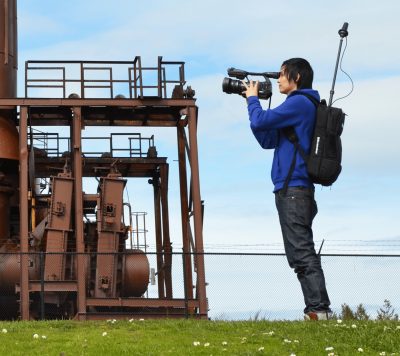Cellular Bonding for Live Event Streaming: The State of The Art
By Jim Bask
From StreamingMedia.com
To catch up on the past, present, and future of cellular bonding, we spoke with executives from four companies that manufacture and distribute cellular bonding products and services.
 Cellular bonding products are key tools for live event producers, who use them to transmit their live streams to the cloud via these multiplexed cellular signals when Ethernet or Wi-Fi isn’t available, and to replace much more expensive satellite transmissions. To catch up on the past, present, and future of cellular bonding, we spoke with executives from four companies that manufacture and distribute cellular bonding products and services. Specifically, we corresponded via email with LiveU COO and Co-founder Avi Cohen. We spoke with Cahit Akin, CEO of Mushroom Networks; Bob Hildeman (CEO) and Alex Telitsine (CTO) from Streambox, Inc.; and Jon Landman, VP Sales at Teradek. Here are the questions, and here’s what we learned.
Cellular bonding products are key tools for live event producers, who use them to transmit their live streams to the cloud via these multiplexed cellular signals when Ethernet or Wi-Fi isn’t available, and to replace much more expensive satellite transmissions. To catch up on the past, present, and future of cellular bonding, we spoke with executives from four companies that manufacture and distribute cellular bonding products and services. Specifically, we corresponded via email with LiveU COO and Co-founder Avi Cohen. We spoke with Cahit Akin, CEO of Mushroom Networks; Bob Hildeman (CEO) and Alex Telitsine (CTO) from Streambox, Inc.; and Jon Landman, VP Sales at Teradek. Here are the questions, and here’s what we learned.
What Is Cellular Bonding?
For those new to the technology, cellular bonding products use multiple cellular modems to combine 3G, 4G, LTE, and other cellular signals to provide increased throughput and signal resiliency. Many cellular bonding products can also combine other signals, like Wi-Fi and Ethernet, for even greater robustness. Interestingly, Streambox developed its first bonding products during the second Iraq War when a prominent news organization requested a product that could combine two 64Kbps Inmarsat satellite signals into a 128Kbps stream for both video and audio. Much of the news delivered remotely during that war was via bonded signals. Although our primary focus is on live production, cellular bonding is used in a much broader range of applications. For example, cellular bonding products provide Wi-Fi on trains and buses, provide data and video links for first responders, transmit signals from remote security cameras, and even provide data links for crop sensors on large farms.
How Effective Is Cellular Bonding in the Real World Today?
Like all technologies, cellular bonding had humble beginnings, and many early forays into livestreaming via cellular bonding met with more failure than success. Since then, services like Facebook Live and YouTube Live have resulted in much more contention for available cellular bandwidth from casual producers. This begs the question, “How robust is cellular bonding for mission-critical applications today?” As we learned from our respondents, we need to recognize that while there are many more users, there are also many more towers, and they’re increasingly connected to the base station via high-bandwidth fiber, increasing tower capacity. While you shouldn’t try to use a single connection for real production applications, Mushroom Networks’ Akin states that, with a properly configured bonding solution (more on configuring later), you should be able to achieve a successful transmission more than 99% of the time…[continue reading]

